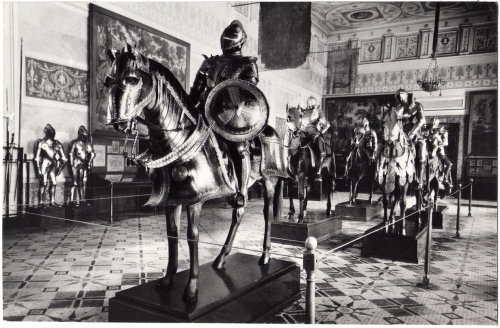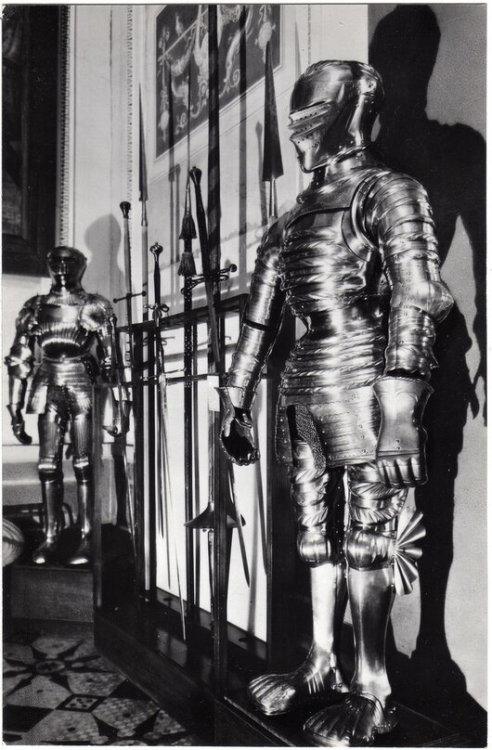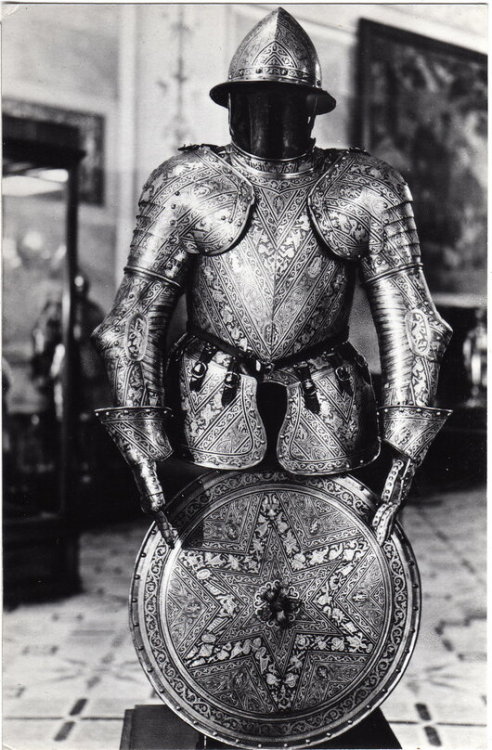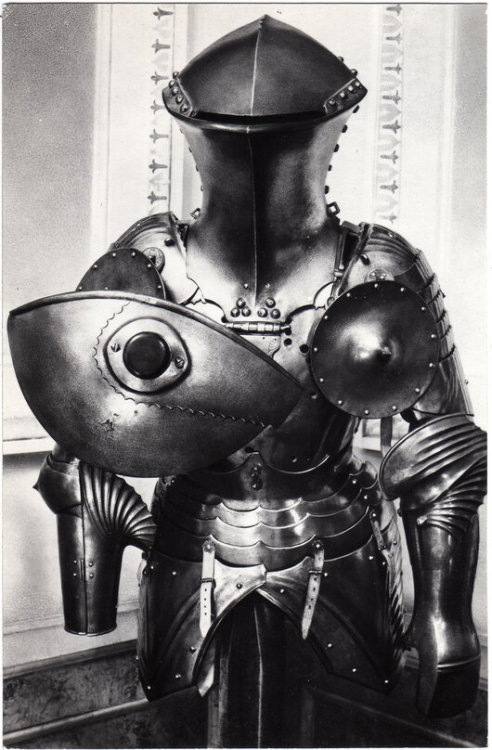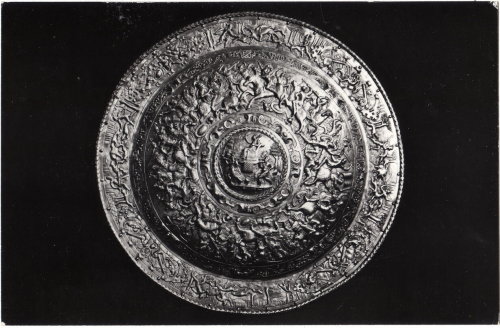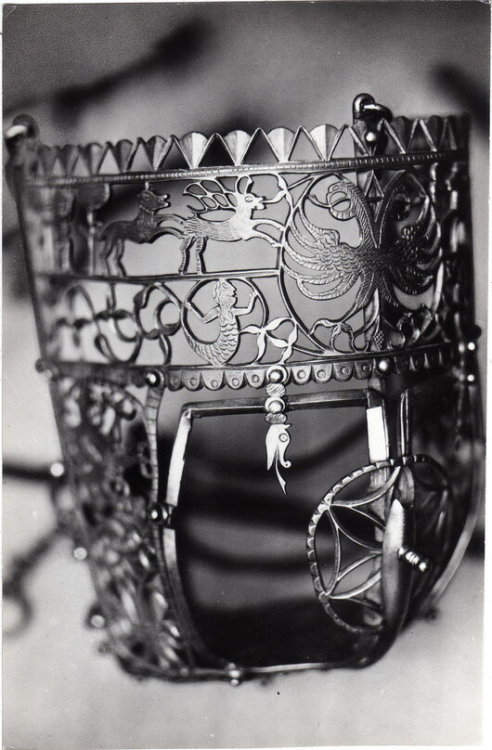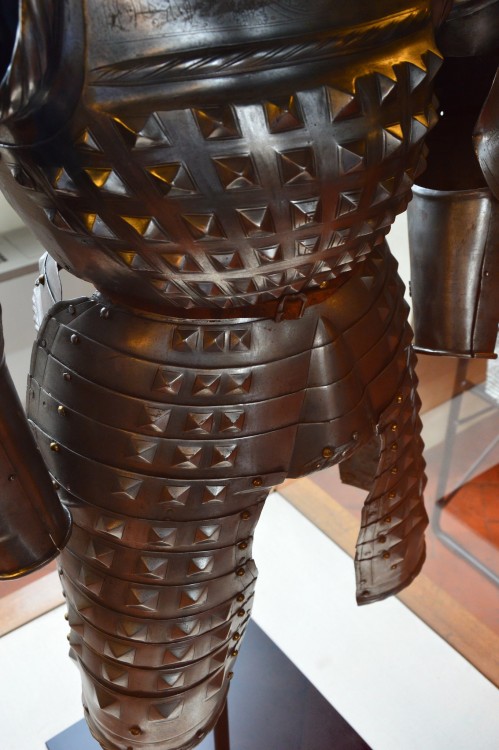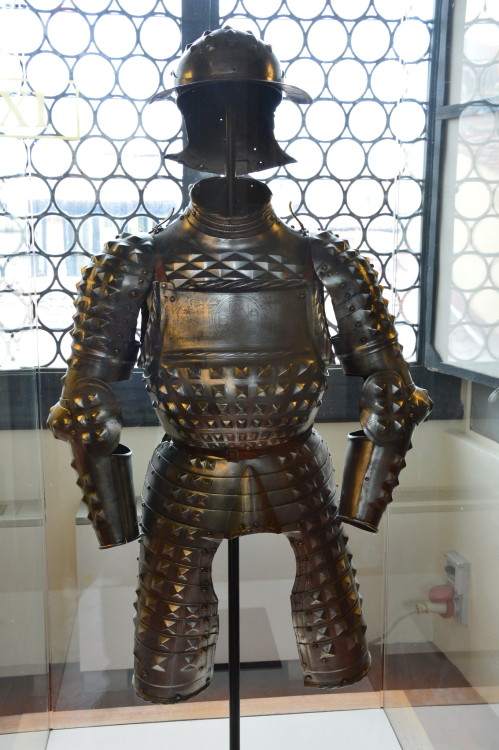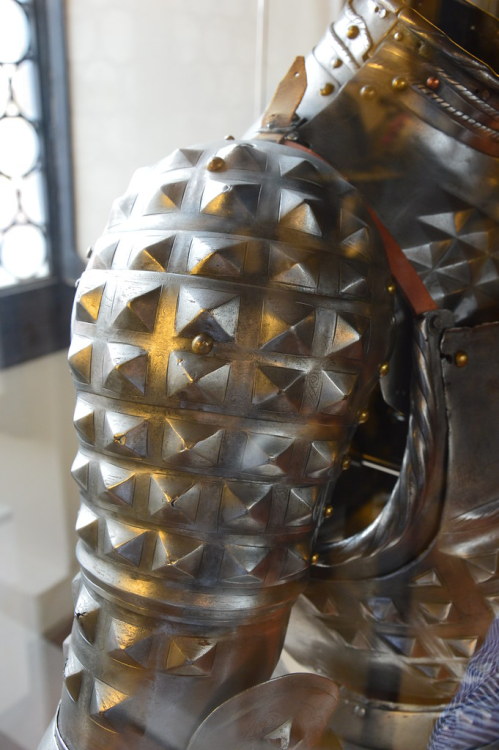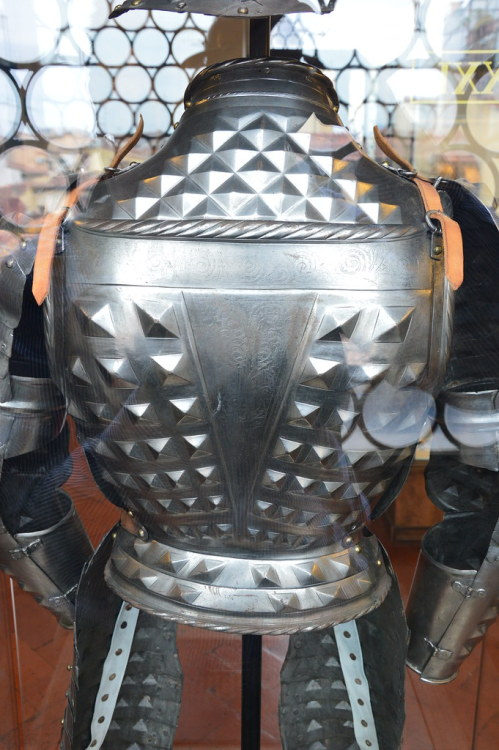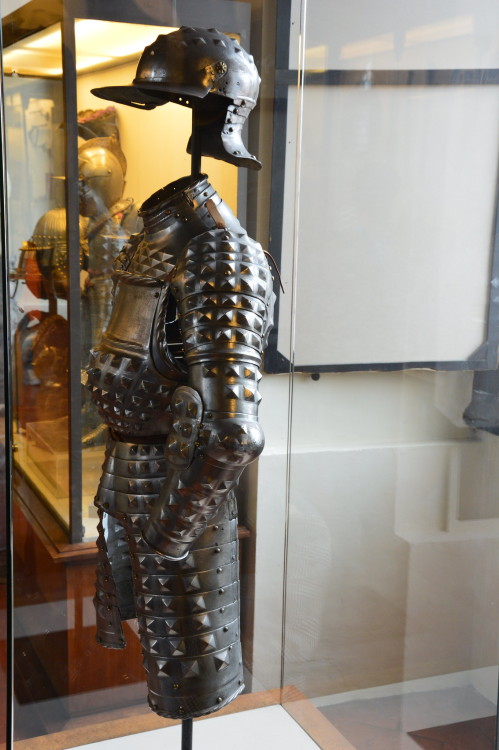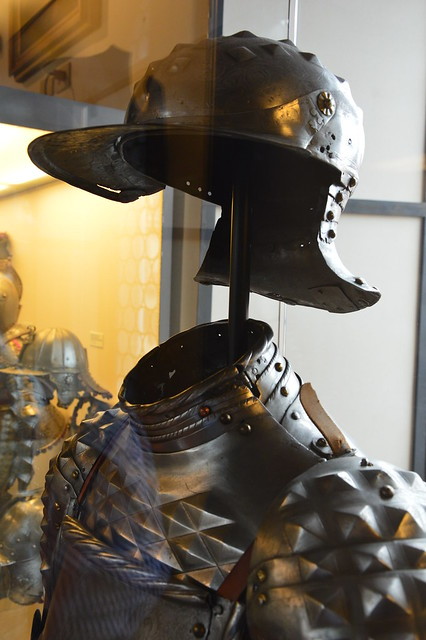#armours




Le Caravage (dit), Merisi da Caravaggio Michelangelo (vers).
Alof de Wignacourt (1547-1622), Grand maître de l'ordre de Malte de 1601 à 1622, et son page.
Date: 1608.
Dimensions:
Hauteur 1.94 m.
Largeur 1.34 m.
Période:
16e siècle, 17e siècle, Europe (période) - période moderne.
Paris, musée du Louvre.





Full finger armor
⚜️ Reconstruction of the left gauntlet from the “Lion armor” (Italy, 1550), possibly made for Henry II de Valois, king of France
Creative Workshop Steel Legacy
- -
Сборка перчатки
⚜️ Реконструкция левой латной перчатки от «Львиного доспеха» (Италия, 1550 год), который возможно принадлежал Генриху II Валуа, королю Франции
Художественная мастерская “Стальное Наследие”
#чеканка
#lion_armor
#Львиный_доспех
#львиная_перчатка
#gauntlet_Lion_armor
#стальноенаследие
#steellegacy
#armororder
#orderarmor
#доспехиназаказ
#gauntlets
Hermitage during the Soviet period, 1974
The exposition of the Knights’ Hall in the Hermitage owes its origin to Emperor Alexander I and his fascination with the history of European weapons. His collection of artifacts was kept in Tsarskoe Selo (near Saint Petersburg, Russia), and then formed the basis of the Hermitage collection of weapons.
1 The Knight´s Hall
2. Arms and Armor of the 15th-16th centuries
3. Half armor of the 16th century, Italy
4. Jousting Armor, 15th-16th cent., Germany
5. Armor of the 16th century, Germany
6. Sallet Helmet, 16th century, Spain
7. Arm armor (bracer) from the armor of King Philip II, 16th century, Italy
8. Rondache (Round Shield), 16th century, Germany
10. Grazing muzzles, 16th century
11. Ceremonial sword, 16th century, Venice
Ph. by I. Narovlyansky
- -
Эрмитаж времен СССР, 1974 г.
Экспозиция Рыцарского зала в Эрмитаже обязана своим происхождением императору Александру I и его увлечению историей европейского вооружения. Его собрание артефактов хранилось в Царском Селе (около Санкт-Петербурга), а затем легло в основу эрмитажной коллекции оружия.
1 Рыцарский зал
2. Доспехи и холодное оружие XV-XVI вв.
3. Полудоспех XVI в., Италия
4. Доспех для состязаний на конях, XV-XVI вв., Германия
5. Доспехи XVI в., Германия
6. Боевой шлем “Салад”, XVI в., Испания
7. Наруч (прикрытие руки) от доспеха короля Филиппа II, XVI в., Италия
8. Щит “рондаш”, XVI в., Германия
10. Конский намордник, XVI в.
11. Церемониальный меч, XVI в., Венеция
Фото: И. Наровлянский
Post link





⚜️ Steel Cuirass, 16th century
Metal, forging
Lida Castle, Belarus
- -
⚜️ Кираса стальная, XVI в.
Металл, ковка
Лидский Замок, Беларусь
⚜️ Half armour for foot combat, ca. 1515
Bargello Museum, Firenze (inv. M 756)
⠀
There is the upper band of the breastplate engraved with the figures of the Madonna with the child and the saints Sebastiano and Barbara.
The armor may have belonged to Giuliano de’ Medici, Duke of Nemours.
⠀
Ph. by Andrea Carloni - Rimini
⠀
- -
⚜️ Полудоспех для пешего боя, ок. 1515
Музей Барджелло, Флоренция (инв.№ М 756)
⠀
На верхней полосе нагрудника выгравированы фигуры Мадонны с младенцем и святых Себастьяно и Варвары.
Доспехи, возможно, принадлежали Джулиано Медичи, герцогу Немурскому.
⠀
Фото: Андреа Карлони - Римини
Post link





⚜️ A little progress on the Gorget mid-16th century
Made by Creative workshop “Steel Legacy”
- -
⚜️ Горжет середины XVI века в процессе
Работа Художественной мастерской “Стальное Наследие”

⚜️ Oriental Bascinet with Hounskull visor, second half of the 14th century - early 15th century.
Made by our Creative Workshop “Steel Legacy”
“Hounskull” Bascinet (from the German “Hundsgugel” – “hound’s hood” or “pig-faced”) is a type of popular medieval helmet that was in wide use among European knights of all military branches in the XIV-XV centuries. Helm basinet itself could have various shapes of dome and design of visor. However, visor “Hounskull” was the most demanded. Its shape not only provided with great vision and breathing, but also reflected direct nobs.
- -
⚜️ “Шатровый” Бацинет с забралом “Собачья морда”, вторая половина XIV в. - начало XV века.
Изготовлен в нашей Художественной мастерской “Стальное Наследие”
“Hounskull” Bascinet (от нем. Hundsgugel - “собачья морда”) - бацинет с длинным коническим забралом. Слово hounskull, искаженный вариант оригинального немецкого названия, считается одним из самых ранних примеров английского солдатского сленга; С середины XIV века бацинеты ради облегчения дыхания стали снабжаться остроконечными вытянутыми вперед забралами, напоминавшими морду собаки. Забрало имело гротескный вид заостренного конуса. Такая форма преследовала вполне практичные цели: большая площадь поверхности позволяла проделать множество отверстий для вентиляции и облегчала дыхание, а по конической поверхности забрала проскальзывал наконечник вражеского копья.
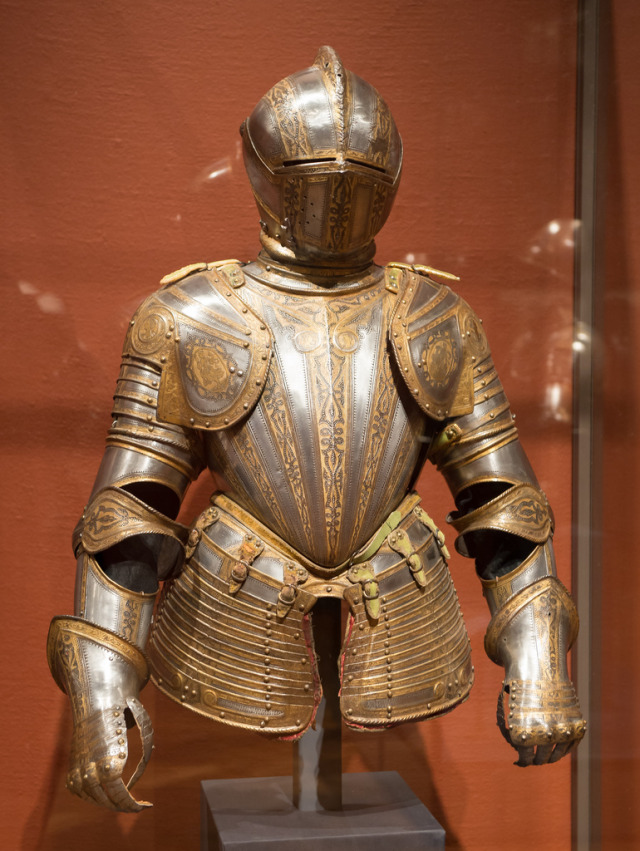 ALT
ALT

⚜️ Half Armor for Foot Tourney at the Barriers, Milan, 1575-1580
Medium: Steel with gilding, brass, leather, velvet weave, and lace
Height: 96.5 cm
Weight: 17.6 kg
In the 16th century, Italian armorers produced spectacular armor garnitures for noblemen, professional officers, and bodyguards in the service of princely courts. An armor garniture consisted of many matching, interchangeable pieces that could be added or removed from basic field armor to make it suitable for different occasions. Like jousting armor, this armor for foot tourneys at the barriers—a sporting event in which knights on foot approached each other on opposite sides of a barrier—is quite specialized. It includes a close helmet that locked onto and rotated on the gorget (collar) and symmetrical pauldrons (shoulder defenses) that provided maneuverability and protection from thrusting across the barrier. The blemish on the helmet of this armor, just above the eye slit, is the result of a glancing blow. This armor, embellished with gilded radiating bands contrasted with steel bands, as well as the Three-Quarter Armor, belonged to the Spanish Marquesses de Dos Aguas.
The Art Institute of Chicago
- -
⚜️ Турнирный полудоспех для пешего поединка через барьер, Милан, около 1575-1580 гг.
Материалы: сталь с позолотой, латунь, кожа, бархатное плетение и кружево.
Высота: 96,5 см
Вес: 17,6 кг
В XVI в. итальянские оружейники изготавливали впечатляющие доспехи. Гарнитуры состояли из множества подходящих взаимозаменяемых частей, которые можно было добавлять или снимать с основной полевой брони, чтобы сделать ее пригодной для различных случаев.
Эта броня весьма специализирована. Она включает в себя закрытый шлем, который фиксируется и вращается на горжете (воротнике), симметричные наплечники (защита плеч), которые обеспечивают маневренность и защиту от ударов через барьер. На шлеме, прямо над прорезью для глаз, заметное пятно — результат скользящего удара.
Доспех украшен чередующимися позолоченными и стальными полосами. Он принадлежал знатной дворянской испанской семье маркизов Дос Агуас.
The Art Institute of Chicago

